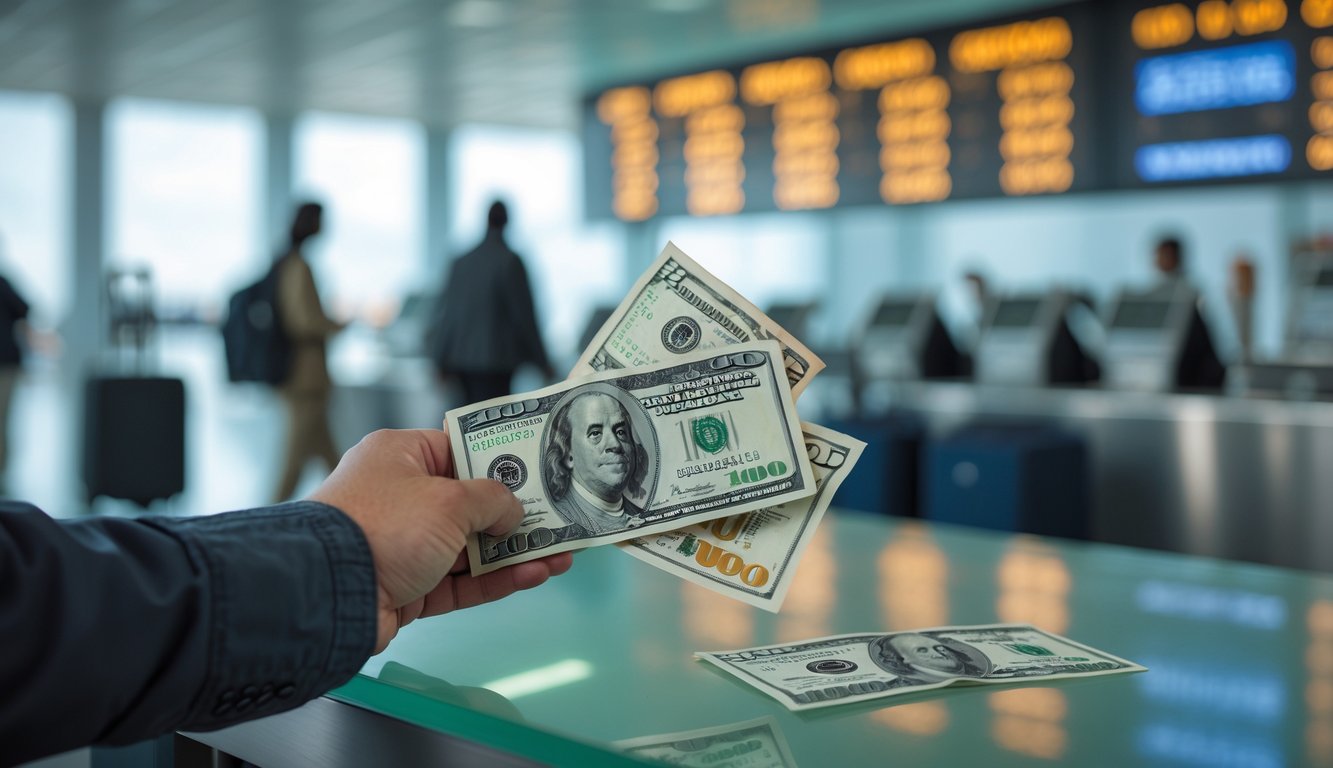
Spotlight: Argentina’s Devalued Peso
A 54% currency crash? Forget your old travel spreadsheets. Suddenly, U.S. dollars are stretching in places where you used to feel robbed just buying coffee. Cabs are discounted, hotels forgot to update their rates—this isn’t “budget travel.” It’s just stumbling into a city where the numbers work for you, for once.
Buenos Aires on a Budget
So, $50 paid for three nights in a San Telmo guesthouse. Shared bathroom, sure, but the décor was that accidental antique vibe nobody can fake. A subway ride cost less than an avocado in LA, and taxis? I went across town for less than what I pay for a latte at home.
I checked my Palermo steakhouse bill three times because dinner was under $10 and the waiter looked genuinely pleased. This is fallout from the peso’s nosedive, but street vendors still prefer U.S. dollars in small bills—nobody trusts the peso to hold value for a week, honestly. Bring $20s, not $100s, unless you enjoy awkward scenes.
Shops post two prices—no scam, just survival. I keep hearing about travelers living like royalty for $400 a week, tango shows included, while souvenir sellers glare at their own currency.
Street Food and Dining in Argentina
If you’re skipping street food because you’re scared of “digestive risk,” you’re missing out. Empanadas cost less than bottled water. I bought three choripán for 1,800 pesos (about $2 after the latest devaluation) and got a free lesson in pork cuts.
Menus feel broken, but pizza at Guerrin or a milanesa is a quarter of last year’s price, so I order double and still pay less. Inflation’s killing locals, but tourists get a four-course meal with house wine for pocket change. Sometimes the waiters look a little annoyed—can you blame them?
A Santiago-born expat told me to always ask for the “menu ejecutivo” at lunch. No sign, no price, just whisper it and you’re eating like a local for $5. Don’t worry about your Spanish—it’s worth the awkwardness. And always carry cash. Magically, the card machines break as soon as you try to pay.
Experiencing South America’s Vibrant Cities
Someone once said if you haven’t wandered Avenida Corrientes at 10 p.m. with a wedge of fugazzeta, dodging philosophical tango dancers, you’re missing the point. I don’t know about that, but I blew through less than $40 in Buenos Aires over a weekend—jumped on a couple tours, snapped a selfie with Floralis Genérica, waited in colectivo lines that never seemed to end, ducked into a museum or two between random rain. Peso’s tanked, city’s still buzzing. Go figure.
I ended up talking to Lucía, an architect who just watched her rent drop in half overnight. She ranted about Netflix being priced in dollars, sipped Malbec that cost me $2, and shrugged about the whole mess. The currency crash sucked me in, but every other person wanted to vent about politics or give me directions. Nobody cared about the time.
I mean, sure, Lima, Montevideo, São Paulo—they’ll stretch your cash, but Buenos Aires almost makes it awkward: you’re paying less for world-class stuff than for a sad burger back home. Is this what “value” is supposed to feel like? It’s not on any travel agency’s deal list, that’s for sure. Sometimes the “best deal” just feels faintly absurd.
Japan: Maximizing Value with the Yen
Why am I paying $5 for a sad cold brew in Manhattan when I can get three konbini meals in Tokyo for less? I kept a weird little tally on my phone—trains, snacks, those ¥110 trinkets I can’t stop buying. My dollar stretched out so far it felt like cheating. Tokyo, Osaka, everywhere I went, my American friends just stared at receipts like we’d broken the simulation. Still not convinced I didn’t miss some hidden tourist tax.
Current Exchange Rates in Tokyo and Osaka
First thing after the Narita Express, I stared at the exchange board—USD at 156 yen? Childhood arcade numbers. The yen’s been pummeled, hit 160 per dollar, which means my cash suddenly feels supercharged, almost like I’m getting away with something. I’d line up for a konbini snack, listen to shopkeepers mutter about tourists, and wonder if I was the problem. Forbes says a dollar gets you 43% more yen than in 2021, so a $100 ATM run spits out ¥15,000-plus. Wild. I still lose half my coins to vending machines.
Retro moment: check old exchange charts, compare Tokyo hotels now to, I dunno, Paris or New York. Not once did I get slammed with a “foreigner fee,” unless you count the endless “discount for travelers” signs—after seven bowls of ramen, it starts to get suspicious.
Who knows what a weak yen triggers next? Shops in Dotonbori have started posting USD prices. Watched an LA guy try to haggle at Lawson. No dice. Carrying cash feels ancient unless you’re glued to Suica or PASMO apps. Everyone else just complains about coins and wishes for more pockets.
Affordable Meals and Capsule Hotels
Counting coins became a sport. Lunch for under 500 yen, bento at Tokyo Eki for what I’d pay for drip coffee back home. Family restaurants—Saizeriya, Matsuya, Yoshinoya—serve up meals for ¥300-600. Onigiri for a buck, standing sushi bars with fish that’s fresher than it should be for the price. Jakucho Setouchi said “humble dishes make travel a feast,” but honestly, I doubt she ever stalked supermarket katsu at 8pm hoping for a discount sticker.
Capsule hotels? Tried them. Not the coffin pods from YouTube nightmares, but business chains with private showers and lockers right in Shinsaibashi. Paid under ¥3,000/night at Nine Hours, nobody blinked when I begged for extra towels. Sometimes the cleanest showers, best vending machine coffee, and those pajamas—if Hilton gave me those, I’d probably switch. My coworkers laughed at the toothbrush kits, but I kept them.
Fun fact: a local told me business travelers book capsules just for the Wi-Fi, not the beds. If your suitcase is bigger than a carry-on, good luck. My locker was next to a snoring IT guy who’d just finished a Zoom call in Osaka. Not ideal at midnight.
Shopping and Cultural Tours
Yodobashi Camera is a maze, always has been, but now my friend scored new Sony headphones for 40% less than in NYC. Shopping in Osaka’s Amerikamura? Total chaos. Vintage jackets, Pokémon stuff, then in Kyoto, craft stalls only take cash—no tap-to-pay, sorry. Watched a woman wipe out a whole Ghibli popup’s plushies because “cheaper than Amazon.” Sure, why not.
Cultural tours are all over the place—full day in Nara with a guide, train fare, deer snacks, under ¥6,000. Walking tours in Tokyo’s old neighborhoods, ¥2,500–3,000. Museum tickets (Mori, Tokyo National) are ¥500-2,000, which is less than a meh cocktail in LA. Some exhibits want timed entry; I missed teamLab and briefly considered scalping tickets. Not proud.
Signed up for a soba noodle class for under $40. The teacher said “real soba must be hand-cut,” then laughed when I botched mine. If you want souvenirs, just go to Don Quijote—snacks, perfume, chaos, tax-free for tourists. Still, I unpacked at home and realized half my haul made zero sense. Too many Hello Kitty socks, not enough logic.



